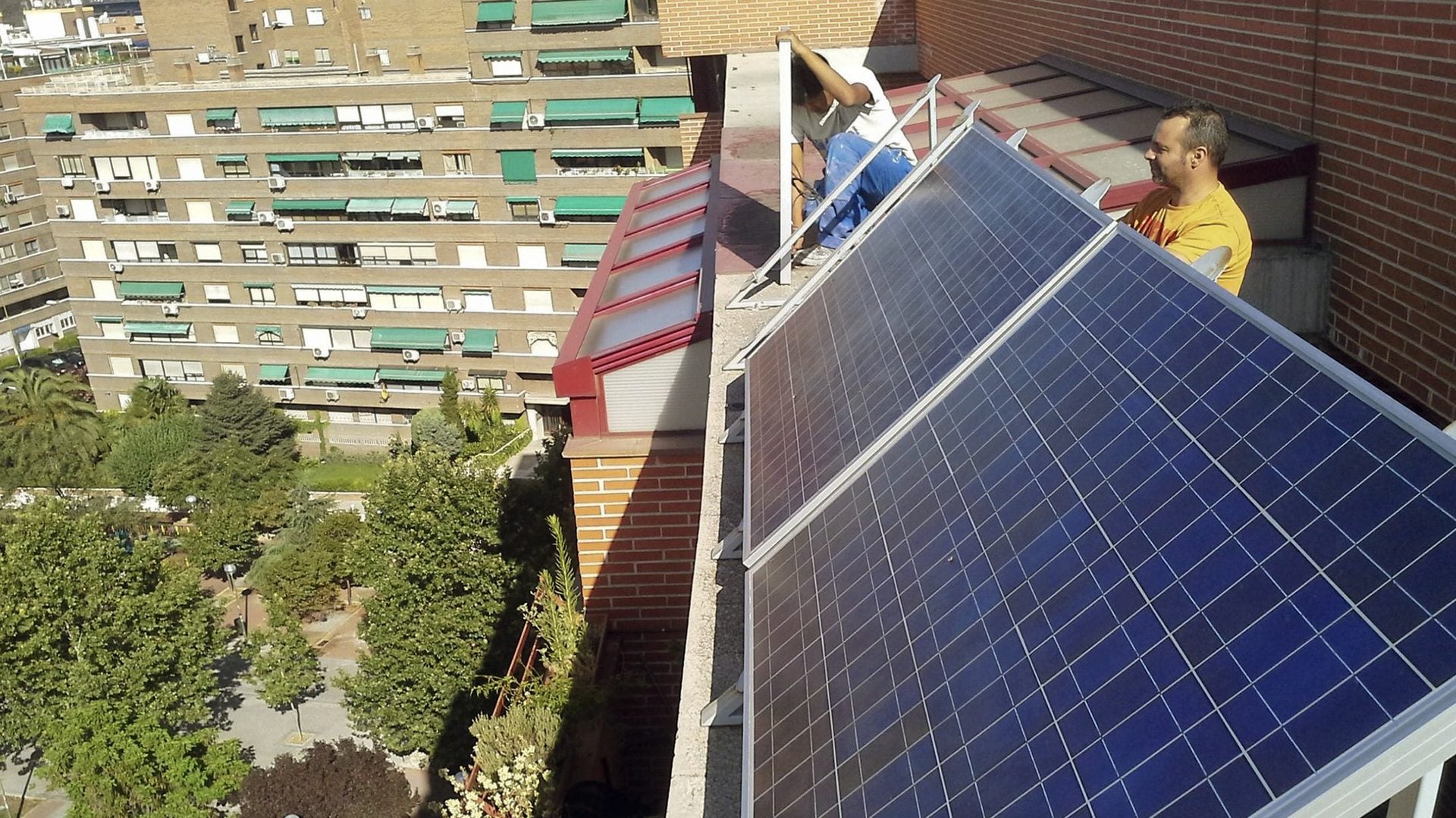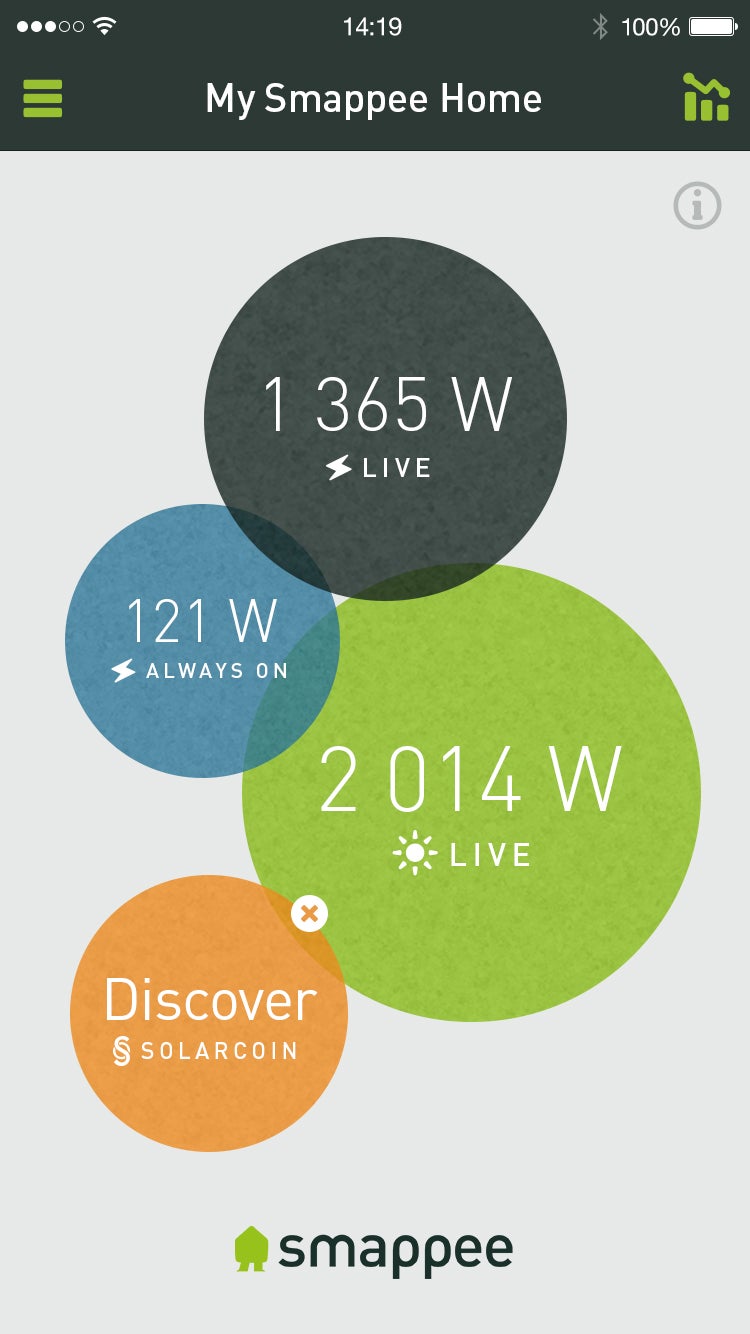Blockchain technology is coming to the solar panels on your roof
Where there’s a market with creaking infrastructure to be disrupted, blockchain technology will disrupt it. At least that’s what some proponents of blockchain tech, which shares many of the same principles underpinning bitcoin, are hoping to do with the energy sector.


Where there’s a market with creaking infrastructure to be disrupted, blockchain technology will disrupt it. At least that’s what some proponents of blockchain tech, which shares many of the same principles underpinning bitcoin, are hoping to do with the energy sector.
While blockchain tech has taken high-finance by storm, with advocates touting it for everything from remittances to replacing securities clearinghouses, it has been slow to gain adoption beyond money men. That’s starting to change, as advocates in other industries begin to eye their own legacy software systems and wonder why those, too, can’t be enhanced or replaced with a shiny, new, cryptographically secured, blockchain.

One proponent from the energy world is Stefan Grosjean, founder of Smappee, a Belgian company offering energy meters for the home. Grosjean didn’t start Smappee with blockchain tech in mind—it was supposed to be a way for consumers to track their energy usage in more detail, making it easier to save money. Over 100,000 Smappee meters have been sold since it was founded in 2012, the company says.
Now Grosjean is hoping to ride surging interest in both solar energy and blockchain tech. Two-thirds of Smappee’s users have solar panels, which they can now use to earn a cryptocurrency called SolarCoin.
SolarCoin is an “altcoin” in crypto parlance—just one of the many cryptocurrencies that compete for the attention of the market. It’s tiny relative to bitcoin: All the SolarCoin in circulation is worth about $2 million, compared to the $11.8 billion that all the bitcoin in the world is worth.
Like many altcoins, and like bitcoin itself, SolarCoin is an open-source project. It’s administered by a volunteer group called the SolarCoin Foundation. The project’s goal is to motivate people to generate solar energy by rewarding them with SolarCoins, a spin on how bitcoin incentivizes miners to commit processing power to the network by rewarding them with bitcoins for each block of transactions mined. Each SolarCoin is worth however much the market decides it’s worth, and there are several exchanges that allow coins to be traded.
One megawatt hour of energy generated by solar panels can be redeemed for one SolarCoin. These SolarCoins can in turn be traded on crypto-markets for other liquid digital currencies like bitcoin (including its rival ether) or US dollars.
SolarCoins aren’t worth very much right now. Each coin trades for a fraction of a bitcoin, translating to just $0.60 a coin in dollar terms. One bitcoin currently trades for upwards of $730. So why would anyone bother with this scheme? The answer, as with many things blockchain, lies in network effects.
Grosjean talks about how an enterprising user could install solar panels abroad, in places with high “solar resource” potential, like some African countries. “You could install solar panels in Africa and get electricity deducted in my home here in Belgium,” he says.
There is also a local opportunity for blockchain tech and energy. Since the production of renewable energy depends on the vagaries of the weather, some of it goes to waste. A blockchain could thus allow consumers to trade the tokens they earn from generating energy with one another; if one home has produced too much solar energy, it could sell it on to a neighbor in the form of digital tokens.
Firms like LO3 in New York are already building these “microgrids” and experimenting with adding a blockchain to the mix as well. ”Being able to exchange information and pricing, and to do settlement almost in real-time allows us to match demand with generation,” Grosjean says. “This is the key thing in the renewable energy landscape. You can’t program the wind and the sun.”
Grosjean and Smappee aren’t alone in thinking that a world of decentralized power sources calls for a decentralized grid linked by a blockchain. Firms like RWE, one of Germany’s largest electricity producers, are also experimenting with the technology. It has developed a pilot using Ethereum smart contracts to manage billing for electric car charging stations, for instance.
Carsten Stöcker leads blockchain work at Innogy, the consulting offshoot of RWE. He talks about an “energy transition” where renewables form a larger part of a grid’s power sources. A decentralized transaction layer in the form of a blockchain would handle that transition smoothly, he says. ”With the blockchain, this can all be kind of built in a machine-to-machine-economy way,” he says.
Not everyone is as sanguine about blockchain technology’s prospects on the grid. Toby Coppel is a founder of Mosaic Ventures, a venture capital firm in London that has invested in some of the highest-profile bitcoin and blockchain companies on the scene.
While Coppel thinks blockchain tech should be a natural fit for the energy business, he hasn’t seen it gain much traction. “Blockchain tech makes sense due to the highly decentralized and distributed nature of the end-producers,” he says. But he admits: “I am afraid I have seen very little of interest in the energy space.”
Blockchain continues to capture the imagination of usually languid industries—whether it’s securities settlement or energy transportation. Executives like Stöcker remain bullish, with plans to move out of the lab and involve “real customers” next year.
It’s clear that blockchain technology, in one form or another, will be with us for the foreseeable future.